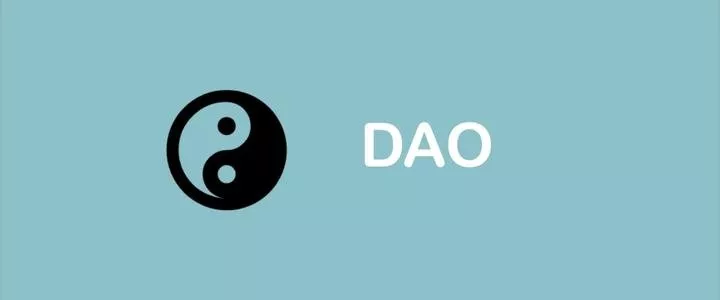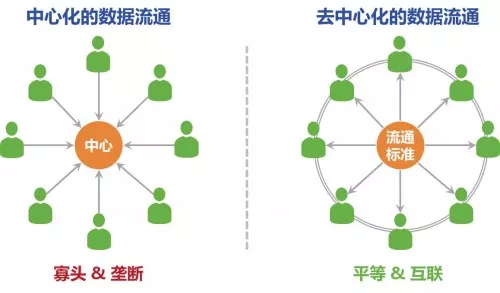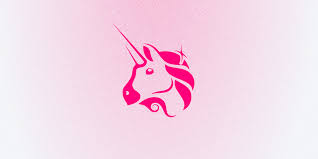Getting started with blockchain | What is a distributed autonomous organization without a boss or a CEO?
In 2009, Bitcoin was born, and then people discovered its powerful underlying technology: blockchain. In a centralized environment, the rise of Bitcoin and the rise of blockchain technology, decentralization (ie, distributed) has become an attractive way of collaboration. Therefore, many people are struggling for this ideal way of collaboration. .
Today, let's talk about what is the Distributed Autonomous Organization (DAO)?
01 distributed autonomous organization

- QKL123 market analysis | long and short double-explosive bitcoin test for 9,000 US dollars, the market uncertainty increased (0729)
- What is the 33% fear of a callback? These three reasons make cryptocurrency analysts continue to be optimistic
- Both sides are prepared – Bitfinex, Tether and NYAG are on the verge
The distributed autonomous organization was originally proposed by American writer Ori Brafman in a book called Starfish and Spider. In his book, he compares the centralized organization to a spider and the distributed organization to a starfish, explaining the difference between the two. He wrote in the book like this:
A spider is a centralized (cell) tissue that cannot survive if it is cut off (the entire tissue). The starfish is made up of a pile of cells that are peer-to-peer (no center), and each tentacle that the starfish tears can grow into a complete starfish.
Starfish and spiders represent the two organizations of decentralization and centralization in the real world.
When a starfish organization breaks down and conflicts are broken down, its organization will become a smaller decentralized organization that will continue to function; and spider organizations will not be able to continue operating after the heads are cut.
In contrast, the starfish-type decentralized organization will have a strong vitality.
This analogy of images makes us aware of the concepts and characteristics of distributed organizations, and DAO, as a decentralized autonomous organization, keeps running through smart contracts and encodes transactions and rules on blockchains. To achieve openness, unattended and autonomous operation, but there is no legal entity . Dash is the first distributed autonomous organization to land.
What role does a distributed autonomous organization have in real life?
02 The role of distributed autonomous organizations

- Avoid review and maximize resource utilization. The distributed autonomous organization stores everything in a decentralized storage network, which is open and transparent and cannot be tampered with. Anyone in the company can personally review the company's activity rules, etc., at a glance, and can schedule resources in a timely manner without having to spend time on review.
- It can avoid marginalizing employees and realize the company's innovation and development. In traditional hierarchical management, it is difficult for leaders to collect opinions, so it is difficult for companies to understand the ideas of grassroots employees. In a distributed autonomous company, people can present their opinions and be seen by others at any time in the blockchain, reducing unnecessary procedures and achieving flat management, so that employee suggestions or opinions can be collected, thereby improving employees. Work enthusiasm and creativity.
- Improve work efficiency and credibility of results. The decentralization feature makes some of the cumbersome processes in life simple. For example, in making public decisions, in order to be fair and equitable, we will usually decide by voting, but it takes a lot of energy to vote in both paper and electronic form, and it is difficult to avoid fraud. The use of distributed ledgers will make every vote of the voter truly and publicly recorded on the blockchain, without the need for votes to generate election results, and be credible in time. In 2016, blockchain technology was adopted in the US presidential election.
03 Summary
In 2016, A Dao , a DAO organization based on the Ethereum blockchain platform, caused funds to be transferred by hackers due to loopholes in smart contracts.
The emergence of this matter not only ended the "The Dao", but also gave a "DAO" a profound lesson – the safety of DAO is very important, a small code bug may cause huge losses.
There are still many people in the distributed autonomous organization who are exploring and advancing. How to develop and evolve in the future is still worth looking forward to.
What do you think of this decentralized autonomous organization? Welcome to share your story in the message area.
——End——
Author | Sanli produced | vernacular blockchain (ID: hellobtc)
『Declaration : This series of content is only for the introduction of blockchain science, and does not constitute any investment advice or advice. If there are any errors or omissions, please leave a message. 』
We will continue to update Blocking; if you have any questions or suggestions, please contact us!
Was this article helpful?
93 out of 132 found this helpful
Related articles
- Bitcoin and cryptocurrency in the history of ice and fire: the most unforgettable 2017 and 2018
- Blockchain will solve digital identity security issues? 84% of organizations believe that blockchain is more secure than traditional IT systems
- After five years of grinding a sword, Weizhong Bank's financial technology is fully open source, and the blockchain plays an important role.
- zkSNARKs contract library "input pseudonym" vulnerability, many mixed currency projects
- The currency circle succeeds in marketing? Gold Daxie: Bitcoin is just that.
- From Libra concept to USDT or thunderstorm: all stable coins are essentially simulations of French currency
- Bitcoin tax is coming: 10,000 tax warning letters are on the way





